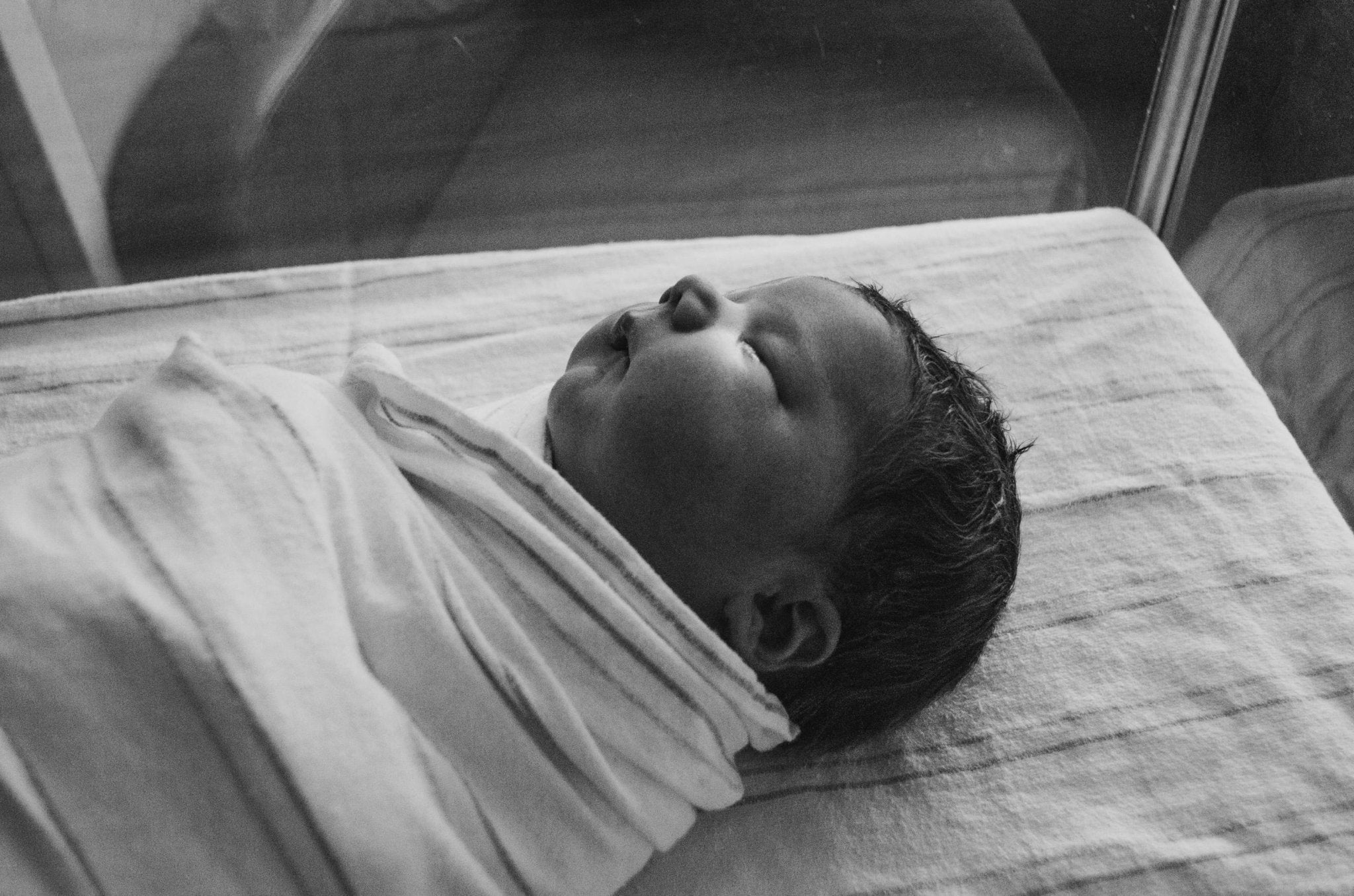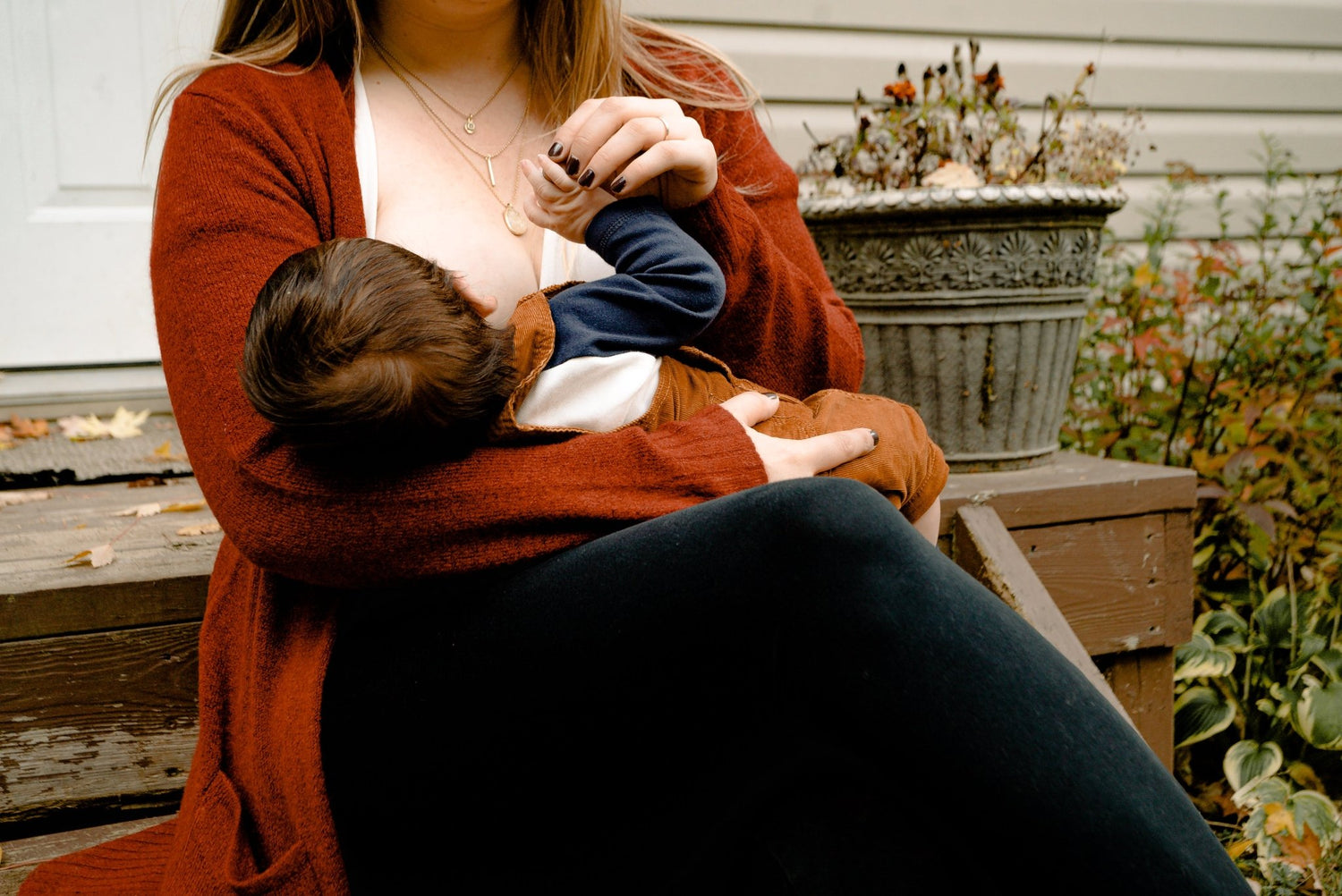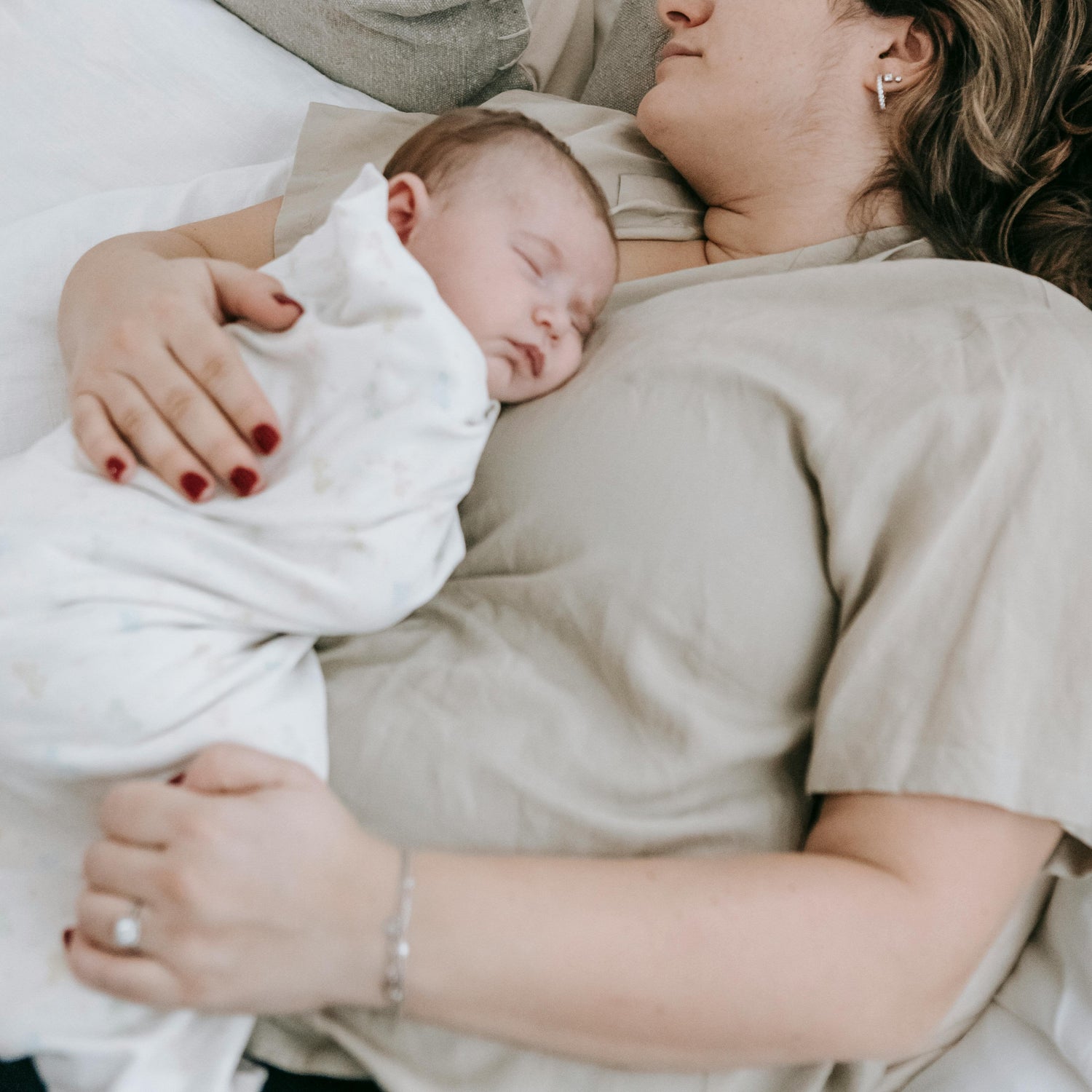Breaking the habit of swaddling: tips for weaning
Swaddling is a common swaddling method used to calm newborns and give them a feeling of security. However, it is important to know when to stop swaddling so as not to affect the baby's natural development. In this article, we will give you a detailed guide on how to break the swaddling habit from your baby.
| Table of contents: |

1. Why swaddle at all?
Swaddling can be very helpful in the first few weeks and months after birth to give the baby a feeling of safety and security. It's obvious that babies like it warm, tight and cozy, because in the womb space was limited and the temperature was always 36 to 37 degrees Celsius. Suddenly, the world is no longer so narrow and warm. No wonder that many babies lack this security. The solution in the first months of life is swaddling. Wrapped tightly, it mimics the feeling in the womb and gives the baby more safety and security to sleep peacefully. It also helps reduce the so-called Moro reflex, which can occur in babies up to 4 months of age. The Moro reflex is a natural protective mechanism that occurs, among other things, during sleep when the baby is startled and jerks its arms upwards. Swaddling can limit these uncontrolled movements and calm the baby.
2. When to stop swaddling?
So why take away this security? In the beginning, babies are placed on their backs to sleep - as is often recommended - and stay like that all night long. However, babies go through different stages of development. One of these developmental steps is the rotation with which swaddling becomes a dangerous sleeping technique. Many babies manage to turn from their back to their stomach, but not the other way around. When lying on your stomach - and not forgetting with your arms against your body - the risk of suffocation is many times higher. The baby should be weaned off swaddling at this stage of development at the latest.
From should to want: Not only does changing the diaper become tricky, but with increasing strength the little ones also manage to free themselves from the swaddle. Initially, attempts are made to somehow get the release under control through tighter wrapping, other techniques or other systems. At some point it becomes an exhausting act from which you want to free yourself. Although the swaddling technique can be helpful at first, it is important to reduce swaddling at the right moment and eventually break the habit completely.
Here are some other signs that your baby may be ready to be weaned from swaddling:
-
Active movements during swaddling: If your baby begins to actively resist being swaddled or tries to break free, this may be a sign that he or she is ready for more freedom of movement. Pay attention to how your baby reacts to swaddling and whether he or she shows any signs of discomfort.
-
Natural stages of development: A baby's natural development includes learning new skills, such as: B. reaching for objects or rolling from your stomach onto your back. If you notice that your baby is actively working on developing new skills, it may be a sign that he or she wants to be less restricted.
-
Sleep habits change: If your baby's sleep habits change and he has trouble falling asleep or staying asleep, it may be an indication that swaddling is no longer the best way to soothe him. He may need more space to move and stretch out so he can sleep well.
3. Breaking the habit of swaddling: tips for weaning
The general rule is: patience! You can't break the habit of swaddling overnight. Give yourself and your baby the time you need. When you start to break the habit, it's best to try out the individual tips first during your sleep phases during the day. If your baby accepts the step during a sleep phase, you can also approach it more easily at night. Don't be unsettled if it doesn't work right away and the first few nights are more restless than usual.
Here are a few tips on how you can gently wean yourself from swaddling:
-
Gradually reduce swaddling: Instead of abruptly stopping swaddling, you can reduce swaddling slowly. First, take just one of the baby's arms out of the swaddle or swaddle blanket. If he feels comfortable with this, you can free the other arm after a few days. Your baby will slowly get used to more freedom of movement
-
Alternative sleep aids: To make the transition easier for your baby, you can use alternative sleep aids. A cuddly cuddly toy or a calming mobile above the bed can help satisfy the need for security without having to resort to swaddling. Try different options and see which ones work best.
-
Establish a sleep routine: An established bedtime routine can help prepare for sleep and ease the transition from swaddling to free sleeping. This ritual can include a warm bath, a gentle massage, or reading a bedtime story. Repeat the ritual every evening to give your baby routine and security.
4. Break the habit of swaddling with the Wombi baby sleeping bag
The solution for finally weaning yourself from swaddling is our Wombi baby sleeping bag. The arms of this sleeping bag can be opened so that little hands have unrestricted freedom of movement. The closed system, on the other hand, like swaddling, is reminiscent of the security in the womb, as it offers the babies slight resistance on their hands and feet, but still allows them the freedom of movement they need - especially if they have been turning for a long time!
When weaning, switching directly to the Wombi can work. Especially when things have to happen quickly and the babies move around a lot while they sleep. Here the Wombi offers the advantage of limitation over the entire body with full freedom of movement. If a quick switch directly to the Wombi is not possible, the next step in breaking the habit of swaddling can be to just swaddle the body. The baby's body continues to be tightly wrapped, but both arms are freed from swaddling. This means that the tightness of the body remains noticeable for the baby.
Tip: Here too, the Wombi can be worn under the swaddle/swaddle bag. But be careful about overheating!
Thanks to our unique system, babies as young as 3 months old can use our Wombi baby sleeping bag - be it to wean them from swaddling or to use the many other advantages of our Wombi.
Get your Wombi baby sleeping bag now to give both you and your baby a better night's sleep.
5. Experience report from a customer

Eva reports on her experiences with swaddling:
I am definitely in favor of swaddling. But only for babies who really need it. Leon slept without being swaddled for the first two nights, then it became clear that he wasn't a good sleeper. A friend gave me a swaddling bag when I was born. Honestly, I looked at this part and didn't know where up and down was. So I resorted to the YouTube tutorial! So far so good, I wrapped Leon in a swaddle bag. I have to say, it looks a bit strange and as an adult you can't imagine that you can feel so comfortable. The first attempt went straight to failure, as soon as I was wrapping it Leon screamed like crazy and I was really excited too. I then stopped for now. However, after a few hours and with more rest, I tried again. Unfortunately, Leon screamed again, but I still wrapped him up completely. I picked him up and calmed him down and after he calmed down and fell asleep, he slept much, much calmer, longer and better. As a very small baby I would sometimes swaddle him and sometimes not, because it didn't always work to calm him down. When sleeping generally got better, I swaddled him every night. At that time, the rule was that babies could be swaddled until they were six months old. When I was about six months old I thought to myself, it's about time we have to stop swaddling.
So let’s get to the unpucking. Of course I tried to put him to sleep in the sleeping bag without being swaddled, all I can say is a complete disaster! He didn't allow himself to be calmed down, flailing his arms, scratching his face, rubbing his eyes. He just didn't know what to do with his arms. So it really didn't work at all. Then I tried to unpuck him slowly and left one arm unpucked. It went so-so, even with a free arm you can do a lot of nonsense, but it was better. However, I couldn't and couldn't free the second arm and Leon was already turning at that point. So I had to do something. I then met Wombi through a forum. And to be honest, I was really skeptical, especially with Leon. I felt like I tried so many tips and tricks for better sleep and somehow nothing ever really helped. But, tada, the Wombi really helped us. On the first night with Wombi, Leon slept almost completely.
The conclusion for us from the swaddle was that we probably wouldn't have been able to get around it. However, unpucking was really difficult. You are also under a certain amount of pressure, as the babies turning around on their own is a very clear sign to stop swaddling. I simply ignored the fact that unpucking doesn't happen overnight and takes weeks, if not months. Therefore, I can only advise you to start unpucking in good time.




